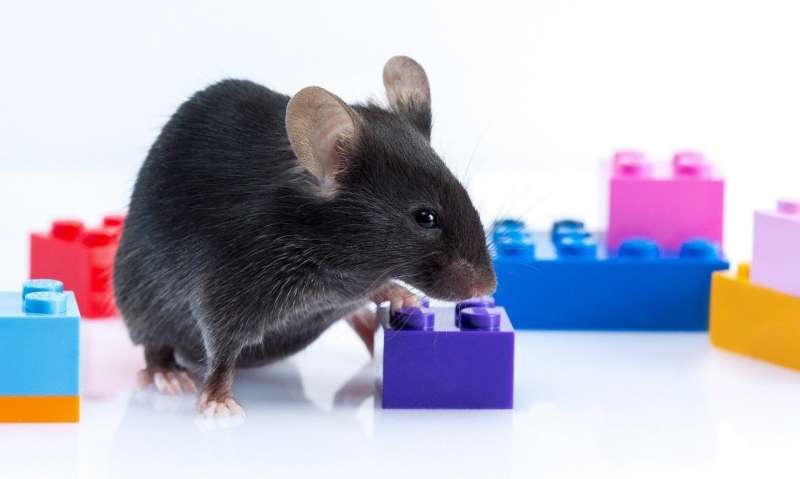Animal cyborg—behavioral control by activating 'toy craving' circuit

Children love to get toys from parents as presents. This craving for objects also underlies object hoarding disorders and shopping addiction. However, the biological causes of object pursuit have remained unknown. Part of the answer may lie with a neural circuit in the hypothalamus associated with "object craving," according to neuroscientist Daesoo Kim from the Department of Biological Sciences at KAIST.
His research team found that some neurons in the hypothalamus are activated in mice while playing with toys. Thanks to optogenetics, they proved that these neurons in the hypothalamus actually govern obsessive behavior toward non-food objects in mice.
"When we stimulate a neuron in the hypothalamus of mice, they anxiously chased target objects. We found evidence that the neural circuits in the medial preoptic area (MPA) modulate 'object craving,' the appetite for possessing objects," said Professor Kim.
Researchers also proved that the MPA circuit facilitates hunting behavior in response to crickets, natural prey for mice, showing the role of this circuit for catching prey. Further, the MPA nerves send excitatory signals to the periaqueductal gray (PAG), located around the cerebral aqueduct, to create such behavior. The team named this circuit the 'MPA-PAG' circuit.
The team showed for the first time that they could control mammalian behavior with this scheme of MPA-induced drive assisted steering (MIDAS), in which a mouse chases the target objects in the front of its head during stimulation of the MPA-PAG circuit. MIDAS allows mice to overcome obstacles to move in a desired path using optogenetics.
Professor Kim, who teamed up with Professor Phill Seung Lee in the Department of Mechanical Engineering, said, "This study provides evidence to treat brain disorders such as compulsive hoarding and kleptomania. It also contributes to the development of technology to control the behavior of animals and humans using strong innate motivation, and thus could impact neuroeconomics, defense, and disaster relief."
He said the team would like to complete the neural circuit map governing behaviors of possession and hunting in the near future by exploring correlations with other neural behaviors controlling possessing and hunting activities. This research was published in Nature Neuroscience in March 2018.
More information: Sae-Geun Park et al, Publisher Correction: Medial preoptic circuit induces hunting-like actions to target objects and prey, Nature Neuroscience (2018). DOI: 10.1038/s41593-018-0115-3


















